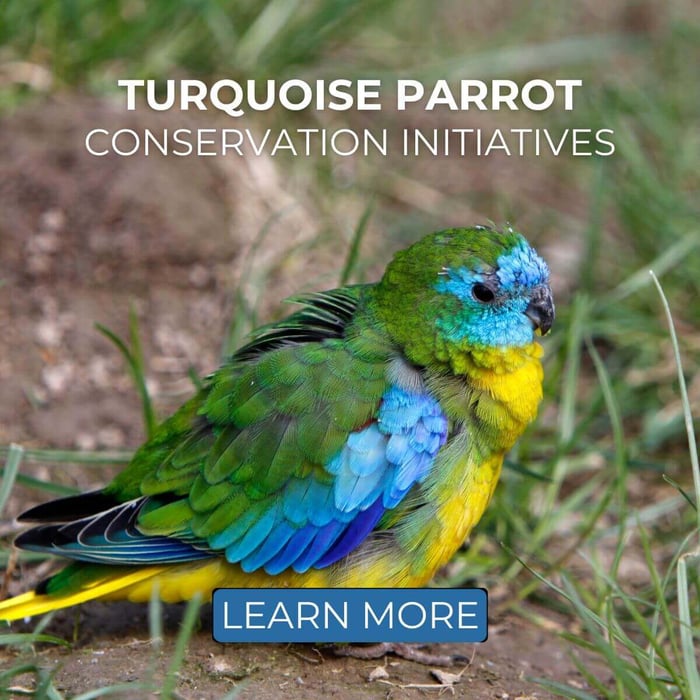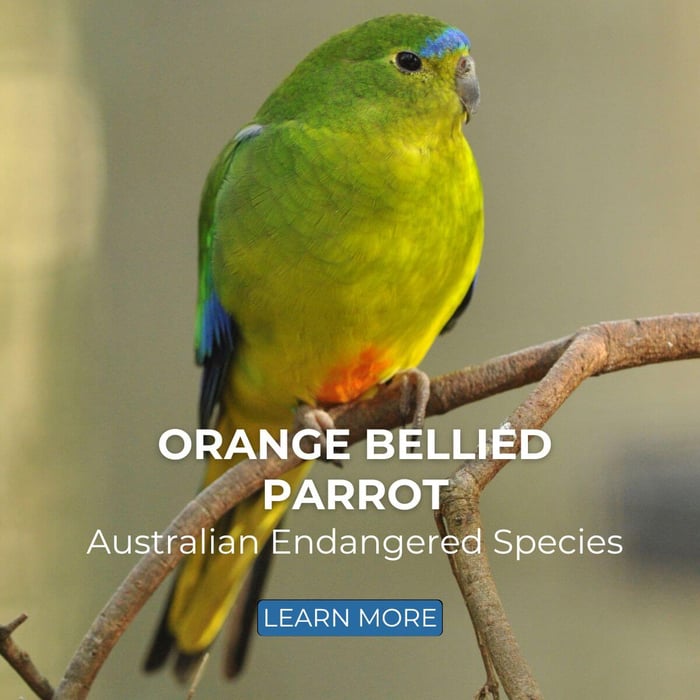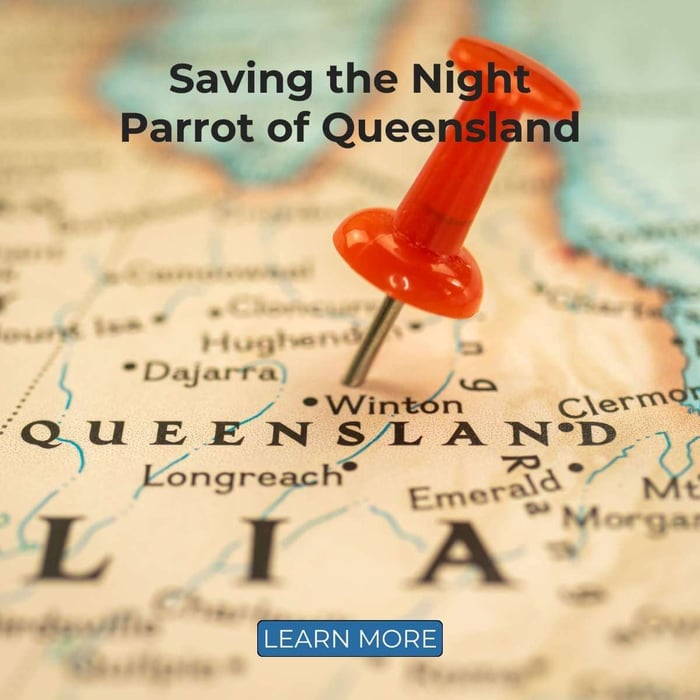The Story of Kakapo the Night Parrot
The Kakapo: A Survivor
Story was written by Ben Mirin
There are few places on earth that could provide a hospitable habitat for a nocturnal, flightless parrot that weighs nine pounds (in the bird world, that's a lot). But until the first humans arrived in New Zealand some 800 years ago, the Kakapo, whose name means "night parrot" in Maori, thrived there alongside many other exceptional bird species. 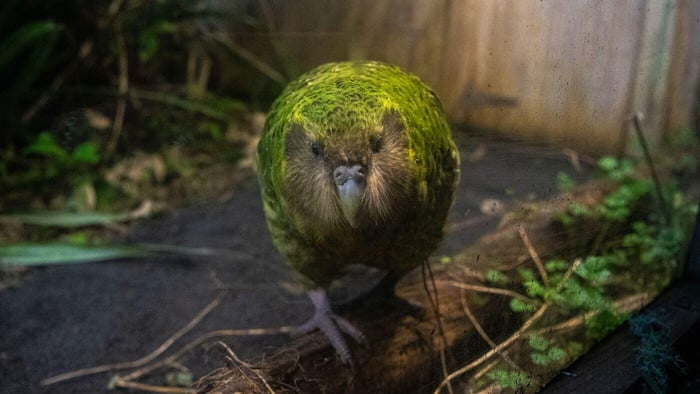
In the absence of mammalian predators, the food chain that evolved had feathers at every level, and the Kakapo's primary concern became avoiding gigantic Haast's Eagles soaring overhead. To escape these sharp-eyed aerial hunters, the Night Parrot evolved stunning emerald green plumage to blend in with the foliage, and it held off on feeding and breeding until the sun had set. It was a system that worked.
Humans: The Destroyers
Then we humans showed up in our boats full of cats, rats, and a host of other furry, fanged invaders and more or less flushed hundreds of thousands of years of finely tuned evolutionary work down the drain. The so-called "Land of Birds" quickly became a land of sheep, pastures, and a stupidly high number of rodents that decimated endemic birds - including the Kakapo, whose eagle defence systems were pretty much useless against hungry mammals. Many bird species went extinct altogether, and the last remaining night parrots retreated to the remotest mountaintops in southern New Zealand, where stoats and feral cats couldn't follow.
Humans: The re-Discoverer
It took hundreds of years for humans to start responding to their impact on the Night Parrot population. In 1894, Richard Henry, one of New Zealand's earliest naturalists, was appointed caretaker and curator of the Resolution Island reserve. There, he launched the world's first systematic bird transfer program when he relocated 572 Kakapo to the island in an effort to save the species. But despite his efforts, the plan backfired - Resolution Island was too close to the mainland, and the parrot's predators swam across the channel and killed every last one.
After Henry's effort failed, the Kakapo essentially disappeared for some 70 years. But then, in 1974, scientists got wind of reports of strange parrot-like tracks in the Fiordland mountains. They followed the lead to the high slopes where the tracks had been found and began broadcasting recordings of the Night Parrot call. To their delight, a male parrot responded.
The Night Parrot's Return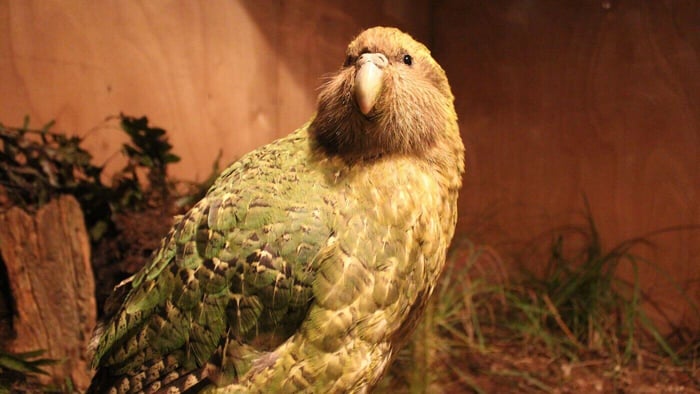
The scientists eventually discovered a small population of 14 Kakapos, some of which could have been survivors from Richard Henry's day since the Night Parrot is one of the longest-living birds on earth, with a potential lifespan of 90 years or more. However, a new challenge quickly emerged: All 14 birds were sex-starved males, with no females to carry the population into the next generation.
Finding a female Kakapo became the researchers' primary objective for the next four years until they finally found a breeding population of Night Parrots on Stewart Island. They relocated 38 males and 21 females to a sanctuary, where after decades of rigorous protection and monitoring, the population has slowly climbed to 126. (Emphasis on "slow" - the Night Parrot have a lek breeding system, which means females generally mate with only one male every few years.)
Even if progress has come at a rather glacial pace, the Kakapo's return has played a vital role in restoring birds' place at the centre of New Zealand's natural heritage. They've become a cultural touchstone for national identity, appearing everywhere from public murals to the nation's currency, and they're a rallying point for politicians and activists who campaign for the preservation and restoration of bird habitats. Night Parrots are reared in captivity and even tour the nation as ambassadors for the species, raising awareness and promoting conservation. So, for every bird that makes a comeback in New Zealand, some credit goes to the Kakapo.
Conclusion
The Kakapo's story is a testament to the resilience of life in the face of adversity. From its thriving existence in a predator-free paradise to the brink of extinction, the journey of the Night Parrot highlights the profound impact humans can have on the natural world. Yet, the story of the Night Parrot is not one of finality but of revival and hope. With dedicated efforts from scientists, conservationists, and a nation united in its commitment to protect its unique wildlife, the Nihas become a symbol of both the fragility and strength of nature. Though the road to recovery has been slow, the Night Parrot's resurgence serves as an inspiring reminder that with persistence, awareness, and respect for the environment, we can reverse some of the damage done and ensure that this extraordinary bird continues to fly in the hearts and minds of generations to come.
Credits: Audubon

